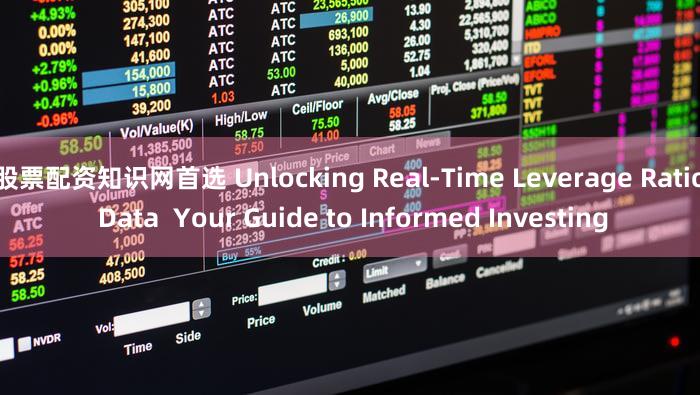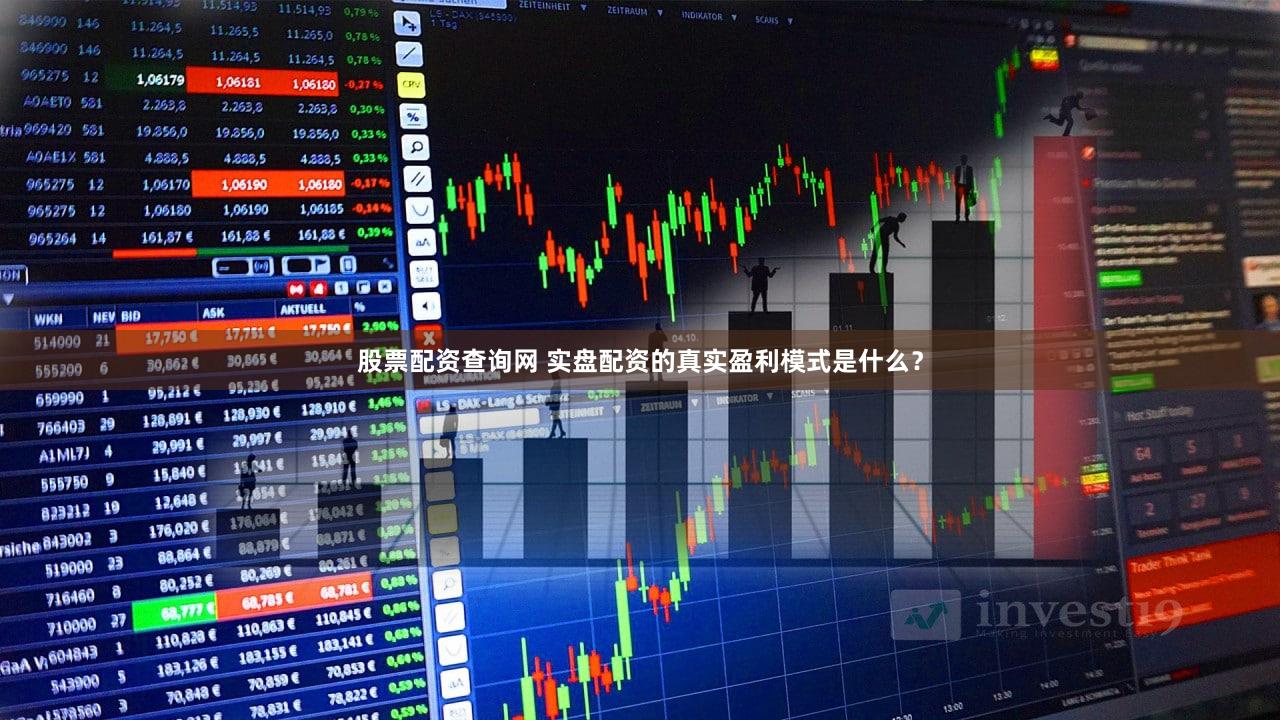
Unlocking Real-Time Leverage Ratio Data: Your Guide to Informed Investing
Meta Description: Learn how to access real-time leverage ratio data, understand its importance in investment decisions, and navigate the complexities of margin trading. Discover reliable sources and expert insights to enhance your trading strategy.
A Ripple in the Pond: Why Real-Time Leverage Ratio Data Matters
So, you're diving into the world of leveraged investing, huh? That's awesome – but brace yourself. It's a thrilling ride, a rollercoaster of potential profits and, let's be honest, equally potential losses. Navigating this wild landscape requires a steady hand, a sharp mind, and most importantly, access to the right information – real-time information. Specifically, real-time leverage ratio data. Think of it as your financial compass, guiding you through the choppy waters of margin trading. Without it, you're essentially sailing blind, relying on outdated charts and gut feelings. That's a recipe for disaster, my friend. Imagine this: you've taken a significant leveraged position, feeling confident in your analysis. But the market takes an unexpected turn, and suddenly, your leverage ratio is skyrocketing, putting you at serious risk of a margin call. A margin call? That's the dreaded phone call no investor wants to receive – it's essentially a demand to inject more capital into your account or risk having your positions liquidated. Ouch! Now picture this with real-time data. You see the shift, you understand the risk, and you can adjust your strategy proactively, potentially avoiding a painful margin call. See the difference? That's the power of real-time leverage ratio data. It’s not just about numbers; it’s about empowering you to make informed decisions, minimizing risks, and ultimately, maximizing your chances of success in the dynamic world of leveraged trading. This guide will equip you with the knowledge and resources to access this crucial data, understanding its nuances and ultimately, making it your secret weapon in the investment game. Let's dive in!
配资指数的实时数据如何获取? (How to Access Real-Time Leverage Ratio Data)
Accessing reliable real-time leverage ratio data isn't always straightforward. Many retail investors struggle with this, often relying on delayed data or inaccurate estimations. This section will break down the different avenues you can explore, highlighting their pros and cons.
1. Brokerage Platforms:
Your primary source should be your brokerage account. Reputable brokers often provide real-time data on your leverage ratio, usually displayed within your account dashboard or trading platform. This is the most convenient and often the most accurate source, as it directly reflects your current positions and margin utilization. However, the quality and detail of this data can vary significantly between brokers. Some may only offer a simple percentage, while others might provide a more detailed breakdown, including individual position leverage and overall account risk. Always check your broker's specifications.
2. Financial Data Providers:
Companies like Bloomberg Terminal, Refinitiv Eikon, and FactSet provide comprehensive financial data, including real-time market information and leverage ratios for various financial instruments. These platforms are typically subscription-based and cater to professional investors and institutions. While they offer incredibly detailed and accurate data, the cost can be prohibitive for individual investors. They are, however, invaluable for sophisticated traders who need granular data for complex analyses.
3. Specialized Trading Platforms:
Several specialized trading platforms are designed for leveraged trading and often incorporate real-time leverage ratio monitoring. These platforms often integrate with various data providers, giving users a consolidated view of their positions and associated risk. They can also offer advanced charting tools and risk management features. However, choosing a reputable platform is crucial, as the quality of data and features can greatly vary.
4. Calculation (with Caution!):
You can attempt to calculate your leverage ratio manually using your account statements and position values. This is a highly error-prone method, though, and should only be considered a last resort, especially for complex portfolios. It's easy to miss crucial details, leading to inaccurate and potentially dangerous decisions. This approach is strongly discouraged unless you are incredibly experienced and have a deep understanding of margin calculations.
Choosing the Right Method: For most retail investors, accessing real-time data through their brokerage platform is the most practical and reliable approach. It's free (usually included in your account), convenient, and directly relevant to your trading activity. However, if your trading involves more complex instruments or sophisticated strategies, exploring specialized platforms or professional data providers might be necessary.
Understanding Leverage Ratios: More Than Just a Number
The leverage ratio itself isn't just a random number; it’s a critical indicator of your risk exposure. It's the ratio of your borrowed funds to your equity. A higher ratio indicates higher risk. For instance, a leverage ratio of 2:1 implies that for every $1 of your own money, you're borrowing $2. This magnifies both profits and losses. While it can boost returns in a bull market, it can lead to devastating losses during market downturns.
Here's a simple table illustrating different leverage ratios and their associated risks:
| Leverage Ratio | Description | Risk Level | |-----------------|-------------------------------------------------|-----------------| | 1:1 | Equal amounts of borrowed and own capital | Moderate | | 2:1 | Twice as much borrowed as own capital | High | | 5:1 | Five times as much borrowed as own capital | Very High | | 10:1 | Ten times as much borrowed as own capital | Extremely High |
Practical Implications: Understanding your leverage ratio in real-time empowers you to:
- Manage Risk: Adjust your positions or reduce leverage before a margin call. 十大炒股杠杆配资平台
- Optimize Returns: Strategically increase leverage when market conditions are favorable.
- Avoid Emotional Trading: Make rational decisions based on data, instead of panic.
Beyond the Numbers: Expert Insights and Practical Tips
Leverage trading is not a game for the faint of heart. It requires discipline, careful planning, and a deep understanding of market dynamics. Here are some crucial tips gleaned from years of experience:
- Start Small: Always begin with conservative leverage levels to get a feel for the market and refine your strategies before increasing your exposure. Don't jump in headfirst.
- Diversify: Spreading your investments across various assets can reduce overall risk, even with leverage. Don’t put all your eggs in one basket.
- Risk Management: Implement stop-loss orders to limit potential losses and protect your capital. This is crucial, period.
- Regular Monitoring: Constantly track your leverage ratio, market conditions, and your overall portfolio performance.
- Education is Key: Continuously learn and refine your understanding of leveraged trading.
Frequently Asked Questions (FAQ)
Q1: What happens if I get a margin call?
A1: A margin call means your brokerage firm is demanding you deposit more funds to cover potential losses. If you don't meet the margin requirement, your positions may be liquidated (sold) to recover the borrowed funds.
Q2: Are there any regulations surrounding leverage trading?
A2: Yes, regulations vary by jurisdiction. Brokers are typically required to set margin requirements and monitor leverage levels to prevent excessive risk-taking.
Q3: Can I use leverage with all types of assets?
A3: No, leverage is typically available for specific asset classes, such as stocks, futures, and forex. The availability and the maximum leverage allowed will vary.
Q4: Is leverage trading always risky?
A4: While leverage can amplify profits, it also significantly increases the risk of losses. It's not inherently risky, but it demands careful management and understanding.
Q5: What are some alternative strategies to leverage?
A5: Options trading, for instance, offers leveraged exposure without the same level of direct risk as margin trading. However, options have their own complexities.
Q6: Where can I learn more about effective risk management in leveraged trading?
A6: Many reputable online resources and educational platforms offer courses and materials on risk management techniques for leveraged trading. Your brokerage might also provide educational resources.
Conclusion: Mastering the Art of Leverage
Accessing real-time leverage ratio data is a cornerstone of successful leveraged trading. By understanding the different methods of accessing this crucial information and implementing effective risk management strategies, you can navigate the complexities of margin trading with confidence. Remember, it’s a journey of continuous learning, adapting to market fluctuations, and honing your skills. So, get out there, stay informed, and trade smart!
文章为作者独立观点,不代表财盛证券观点






